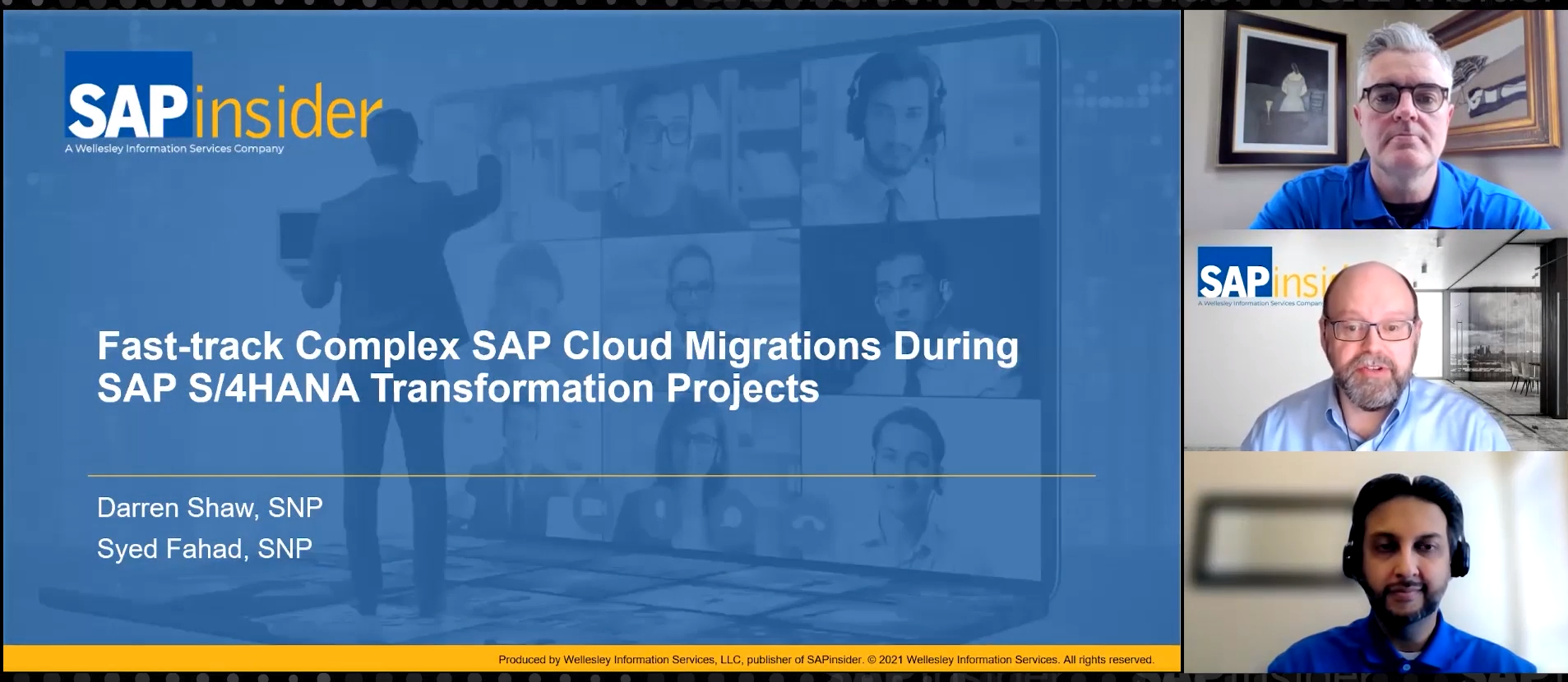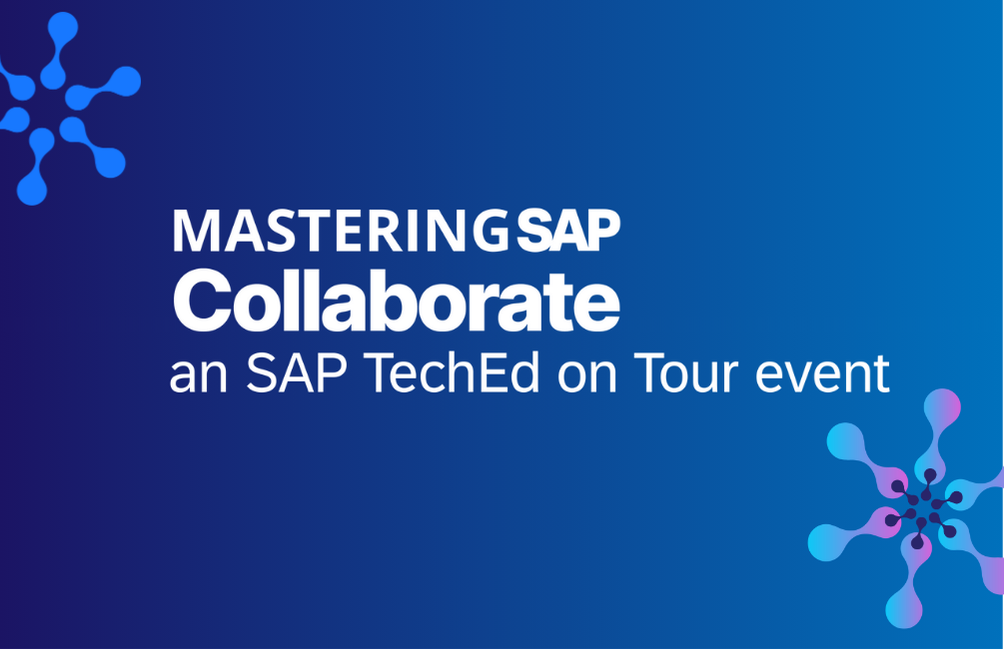Are You Ready for the Cloud?
Platform vs. Best of Breed: A Renewed Look at Which Approach to Choose
by Neil McGovern, Vice President, Product Marketing, SAP
The cloud is changing. It’s no longer about turning off an on-premise data center so that an application can be implemented in a different environment. It’s about bringing the opportunity to change a landscape. It’s about changing how to structure an IT landscape strategically.
Traditionally, companies had data sets for each workload. For example, the financial system in which all their critical high-concurrency transactional data was stored had one data set, and there would be a second for their analytics product supporting the computationally intensive requirements for analytic processing. The driver of this bifurcation of data was that the hardware simply couldn’t support these conflicting workloads. The cloud’s ability to scale has changed this, as it provides the ability to have one set of data instead of two or more. The declining costs of memory as well as the emergence of new options — such as persistent memory and the advent of business data platforms such as SAP HANA — have changed the ground rules.
Explore related questions
Beyond having multiple copies of data, another challenge facing companies is the ability to handle different types of data. This includes data that would have been stored in traditional relational tables but has expanded to other locations — such as log files from Internet of Things (IoT) devices — or data representing many-to-many relationships, which would have fallen outside the capabilities of those same relational databases. And now that this data is being stored, to get the most value companies need to handle that data with different methods, such as a query engine, a spatial engine, a graphical engine, or a sentiment analysis capability.
There is also the impact of organizations moving to real-time data. Ten years ago, the financial sector was driving the real-time push because a difference in even a few microseconds would have a huge monetary impact. But in other sectors, real time could mean anywhere from 10 minutes to a day. Today, across nearly all industries and organizations, the latency has come down to minutes or seconds, putting additional stress on data landscapes. Basically, as soon as the data is created, it must be available for analytics and other uses.
Taking a platform approach to data management can allow enterprises to address these diverse requirements. It can provide the assurance that they are working with a single version of the truth, regardless of where that data is stored, processed, or secured. Moving to the cloud, virtualization of data, the ability to support real-time processing, and the ability to support multi-model database management are not only driving, but also enabling, platform-oriented approaches to managing and accessing data.
Making the Cloud Work
To be ready for the cloud, enterprises must be prepared if they are going to be successful. The first step must be to create a complete data model — as they cannot take a fragmented model with them. The explosion in volume, velocity, and variety of data types and sources has made the need for an enterprise scale data model critical, just as it has made it difficult for enterprises to determine Precisely how much data they currently have. While the elasticity that the cloud offers will allow enterprises to bring more workloads to bear, it is something that is expensive to do on premise. Companies need to reduce the complexity around moving and copying data; otherwise, achieving the next generation of expectations will be nearly impossible.
There will also be reasons to keep some data workloads on premise. Some of this will be driven by regulations, but part of the equation is certainly the fact that there is a fee for cloud storage and computing. If an enterprise uploads a lot of data, it will be charged monthly for storing that data whether it is used or not. Data that is local can have a lower incremental cost per terabyte, especially when an enterprise has a data center that has a lot of recently freed-up capacity as data and workloads have moved to the cloud. If that capacity hasn’t been switched off, then infrequently accessed or historical data can be cheaper to keep on premise. But data centers weren’t built for sub-second latency, so deciding which data will be part of the cloud-based data model and which will remain in an on-premise data center will be a key part of getting ready for the cloud.
Enterprises also need to understand that they may not be able to adopt a single cloud vendor for a few reasons. The first is that the applications they want to use may not run on their preferred vendor’s platform. This ties to a second reason, which is that some cloud vendors are stronger in different regions. For example, currently Amazon Web Services (AWS) and Microsoft Azure are stronger in Europe, while Alibaba Cloud is stronger in China. A third reason for maintaining multiple cloud vendors, which is less tied to functionality and availability, is that enterprises likely want to avoid being locked into a single vendor. Just as it can be beneficial to have multiple sources within the supply chain to help reduce dependencies, risks, and costs, the same can be true in the cloud space.
In deploying to the cloud, enterprises are also looking to add functionality, to define integration points and application programming interfaces (APIs) that make it easy for applications to connect and communicate, and to improve security. There have been many stories over the last few years of enterprises being hacked, which has led to the perception that on-premise data centers are less secure than the hyperscalers. Combined with the elements of shared storage that eliminate the scalability limitations, it’s like connecting one data center to the surrounding ones and pooling the resources. In addition, there is a reduction in maintenance as enterprises offload the need to download and install the latest security patches and updates. Also, knowing these updates are installed quickly and automatically is also a significant benefit. Coupled with the fact that cloud infrastructure solutions are refreshed and updated externally, providing upward compatibility and new functionality almost weekly, there are many positives to using the cloud.
The journey to the cloud should begin with relatively simple applications, such as new reports that need to be run. This action is a standalone, discrete, low-risk first step to evaluate the strengths and weaknesses of the platform. Enterprises want to learn about an environment before they trust their most significant, strategic, machine learning (ML) application to technology they’ve never used before. To be successful in the cloud, they should start with something small, progress next to more detailed analytics, and then grow to develop more standalone, proprietary applications that are unique to their business.
The challenges that enterprises are facing that make them look at the cloud are four-fold. First is the need for real-time data analytics. The second is that they want a single platform for their varied data and different data types. The third is the need to integrate large data sets into a single version of the truth. And the last is the desire for strategic multi-cloud planning. Successful organizations will focus on having a complete data model that eliminates the fragmentation that has evolved over the years with existing on-premise systems and applications. They will understand what data will be stored where, and they will start with a low-risk approach that allows the strengths and weaknesses of the platform to be learned, while at the same time builds the internal knowledge that will be essential for success.
Beyond their initial experiences with the cloud, one of the main items enterprises want to explore pursuing is ML technology, primarily to ensure they aren’t suddenly left behind by their competitors. Just as artificial intelligence (AI) has made chess computers improve over time to the point where they are so far beyond our abilities that the human players don’t stand a chance, enterprises know that the time is coming when ML will be vital to the future of their real-time decision-making capabilities. While human input will not disappear, ML will add more and more value, so it is necessary to maintain a competitive advantage.
The Next Steps
The four challenges for enterprises just described can be broken down into two categories: the first is the overall challenge, and the second is the data challenge. The demands placed by ML, real-time processing, diverse data types, and having analytics embedded with operational and transactional applications has forced a renewed look at the issue of platform vs. best of breed. Today, the platform approach no longer requires a single, monolithic target to be implemented. Advances in storage, bandwidth, and elasticity can bring more computational resources, which means that organizations do not have to choose one or the other. The cloud also provides the scale and flexibility to allow data platforms to store and process data in the most optimal and appropriate place.
But global enterprises will still need to resolve the data challenges and balance those against the need to optimize storage and bandwidth. The three main issues that they will face with data in the cloud are:
- Bringing all the data together from different places to be accessed at the same time
- Ensuring that their data is cleaner than ever
- Structuring the data so that it is formatted to be accessed by ML
Data governance is a vital component of any cloud-based platform. Best of breed vs. a single platform comes down to being able to access a single data set and bring all the tools to bear on that data set without creating more data silos, eliminating the need to load the same data multiple times in different places. This means having a single copy of the data with built-in engines to deliver the value required from that data.
The ability to query, manipulate, and analyze data without having to use multiple systems — and to do it with a single product rather than a multitude of different products — is more likely to deliver optimal outcomes. The platform approach allows enterprises to solve these problems and to approach cloud decisions with flexibility and agility.








